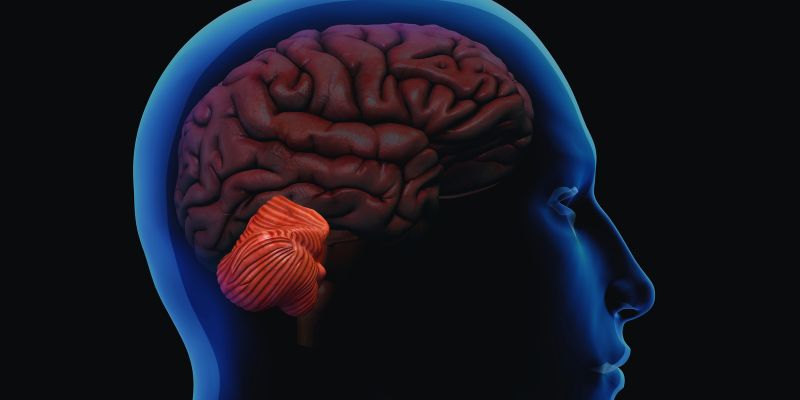Understanding Spinocerebellar Ataxia: An Ultimate Guide to the Warning Signs
Spinocerebellar ataxia (SCA) is a rare neurological condition that impairs coordination and mobility. It results from damage to the cerebellum, which regulates motor abilities and balance. Because this disorder is progressive, symptoms get worse with time. Effective management of the condition depends on early discovery.
Among the first warning symptoms of spinocerebellar ataxia are speech trouble, poor hand coordination, and unstable walking. Early identification of these symptoms will enable one to seek medical guidance. Genetic elements mostly cause SCA, so family history is a major risk factor. Knowing the symptoms and their development will prepare people and those looking after others for the difficulties ahead. The following article examines SCA's main warning indicators, which enable early-stage recognition.

What is Spinocerebellar Ataxia?
A collection of hereditary neurological diseases mostly affecting the cerebellum is spinocerebellar ataxia. The cerebellum of the brain coordinates movement. Damage to this region causes coordination, balance, and muscle control loss. Genetic changes passed on through families create SCA. Each of the several varieties of SCA has different symptoms and rates of progression. Some kinds show up in adulthood; others start early in life.
The illness advances over time, causing ever more incapacity. Many people with SCA finally find they need supportive tools for mobility. Early identification and treatment can assist in slowing down the development of symptoms, even if there is no cure. Those who run the danger of this developing neurological disorder must first understand its nature. Confirming the diagnosis by genetic testing enables people to make future treatment and care plans.

Early Symptoms of Spinocerebellar Ataxia:
Usually, the initial SCA symptoms show themselves slowly. Many people first have little trouble balancing. Though they start as clumsiness, these symptoms get worse over time. Among the first warning symptoms is unsteady walking. People could find it difficult to keep balance even on level ground. Another frequent complaint is handshakes, which make writing or buttoning a garment challenging.
Early stages also include speech challenges. People may struggle to control their voices, and their words become garbled. Additionally, aberrant eye movements, including trouble monitoring moving things, are possible. Understanding the early SCA signs will enable people to seek medical attention. A neurologist can evaluate reflexes, muscle strength, and coordination using tests. Early diagnosis lets one better control symptoms and change their way of life.
Progression of Spinocerebellar Ataxia:
Symptoms worsen as SCA advances. Walking problems get worse and usually result in regular falls. Many people finally need a wheelchair, walker, or cane for mobility. Muscle weakness becomes more apparent. Fine motor skills—like holding objects—degrade with time. These developments complicate daily tasks.
Additionally, speech difficulties can be aggravating. Some people lose their clarity of speech and need different ways of communicating. Difficulties swallowing could arise, raising a choking or aspiration pneumonia risk. Cognitive ability is usually preserved; some people may have memory issues. Common emotional changes, including anxiety and despair, are also common. Managing this progressive neurological disorder calls for assistive equipment, physical therapy, and speech therapy. These treatments can help preserve independence and quality of life for as long as possible.
Causes and Risk Factors of Spinocerebellar Ataxia:
Usually, genetic mutations cause SCA. It is an inherited condition; thus, it is passed on through generations. If one parent has the gene, their child has a 50% chance of inheriting it. Various forms of SCA are associated with particular gene mutations. These mutations cause degeneration of nerve cells in the cerebellum, compromising coordination and balance.
The biggest risk factor is family history. Genetic testing can ascertain whether a person carries the mutation if a close relative has SCA. Early discovery lets one better plan and modify one's lifestyle. Although genes mostly define a person, environmental elements could affect the degree of a symptom. Knowing why this neurological disorder develops will enable people to make wise medical decisions. Those with a family history of SCA are advised genetic counseling.
Diagnosis and Medical Evaluation:
Medical history, neurological tests, and genetic testing are used to diagnose SCA. A neurologist evaluates coordination, reflexes, and muscle strength to pinpoint symptoms. Imaging studies, including MRI scans, can provide common indicators of SCA cerebellar atrophy. Nerve functioning can be assessed by electromyography (EMG).
Genetic testing clearly diagnoses the illness by identifying particular gene alterations that cause it. Those with a family history of SCA should pay particular attention to this test. Early diagnosis allows one to better control symptoms. Doctors could advise occupational, physical, and speech therapies to increase quality of life. Early medical evaluation and knowledge of the warning signs of spinocerebellar ataxia will prepare people for upcoming problems.
Managing and Treating Spinocerebellar Ataxia:
Although SCA cannot be cured, treatment centers on symptom management. By increasing muscle strength and balance, physical therapy can lower fall risk. Speech therapy can help with communication problems. Therapists give strategies for improved alternative communication styles and speech clarity enhancement.
Assistive tools, such as canes, walkers, and wheelchairs, increase movement. Occupational therapy helps people modify their regular activities to maintain their independence. Prescriptions for medications could be for certain symptom management. Muscle relaxers can ease stiffness and tremors. Antidepressants could address emotional problems, including anxiety or depression. Crucially important is a support system comprising caregivers, therapists, and neurologists. Managing this developing neurological disorder calls for a complete strategy.
Coping with Spinocerebellar Ataxia:
Living with SCA can be demanding. Declining skills cause many people to get frustrated. Essential is family, friends, and medical professional support. Combining support groups can help one find emotional release. Speaking with others going through similar difficulties makes them feel less alone. Online communities provide tools and common knowledge as well. Help with mental health is vital. Many people with SCA have anxiety or depression. Therapy and counseling can help one control these emotional difficulties.
Changing a lifestyle calls for patience. Making house changes, including ramps and handrails, will help to increase safety. Future planning—including caring and financial plans—may help to lower stress. Maintaining a good attitude and emphasizing skills above constraints will help people survive. Control of the early signs of SCA greatly enhances the general quality of life.
Conclusion:
Spinocerebellar ataxia is a progressive neurological condition affecting speech, coordination, and balance. Early recognition of the warning signs of spinocerebellar ataxia will aid in diagnosis and symptom control. Although there is no cure, assistive tools and therapies help to enhance daily living. Genetic testing is necessary for persons with a family history of SCA. Early intervention helps people be ready for problems ahead.
Having SCA calls for both physical and emotional changes. The help of loved ones and medical experts makes a big impact. Maintaining independence and controlling symptoms depend on an awareness of this developing neurological disorder.











